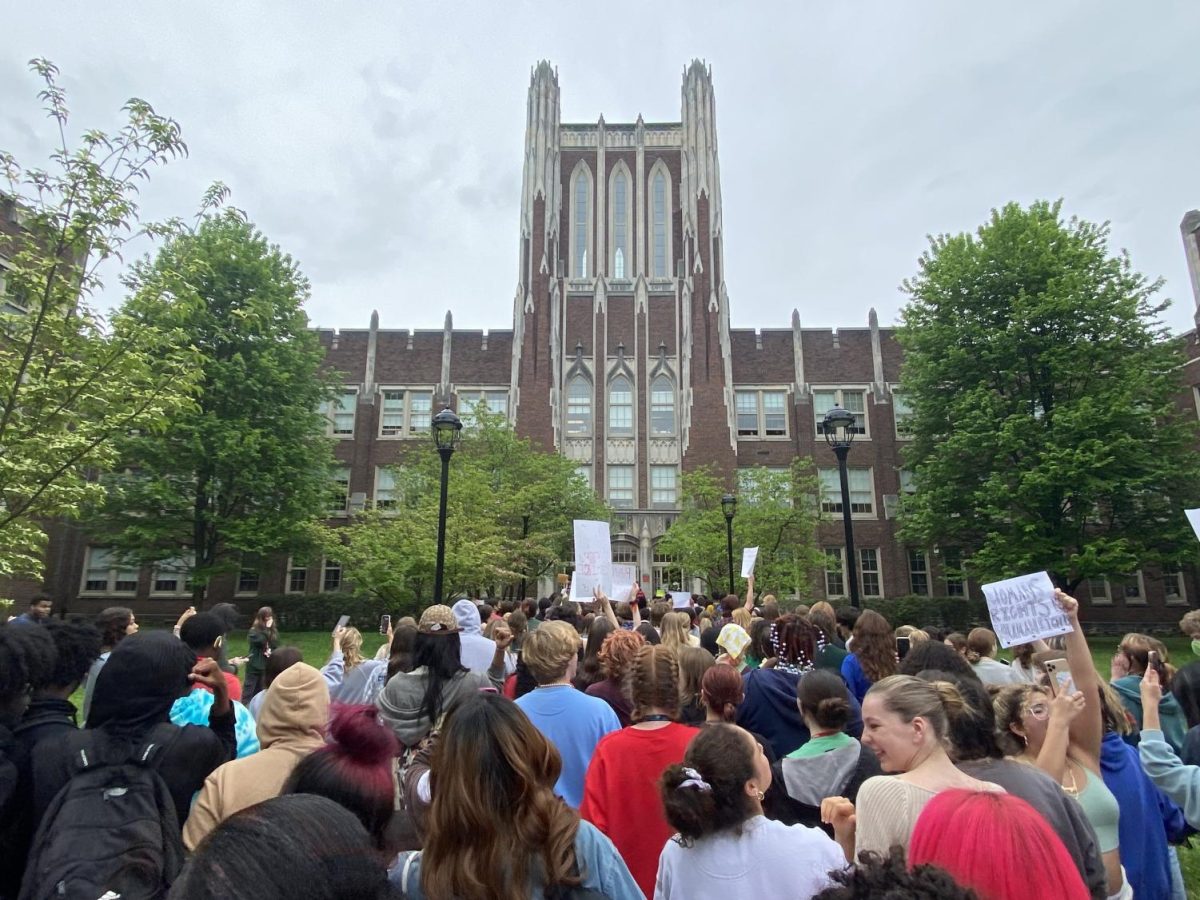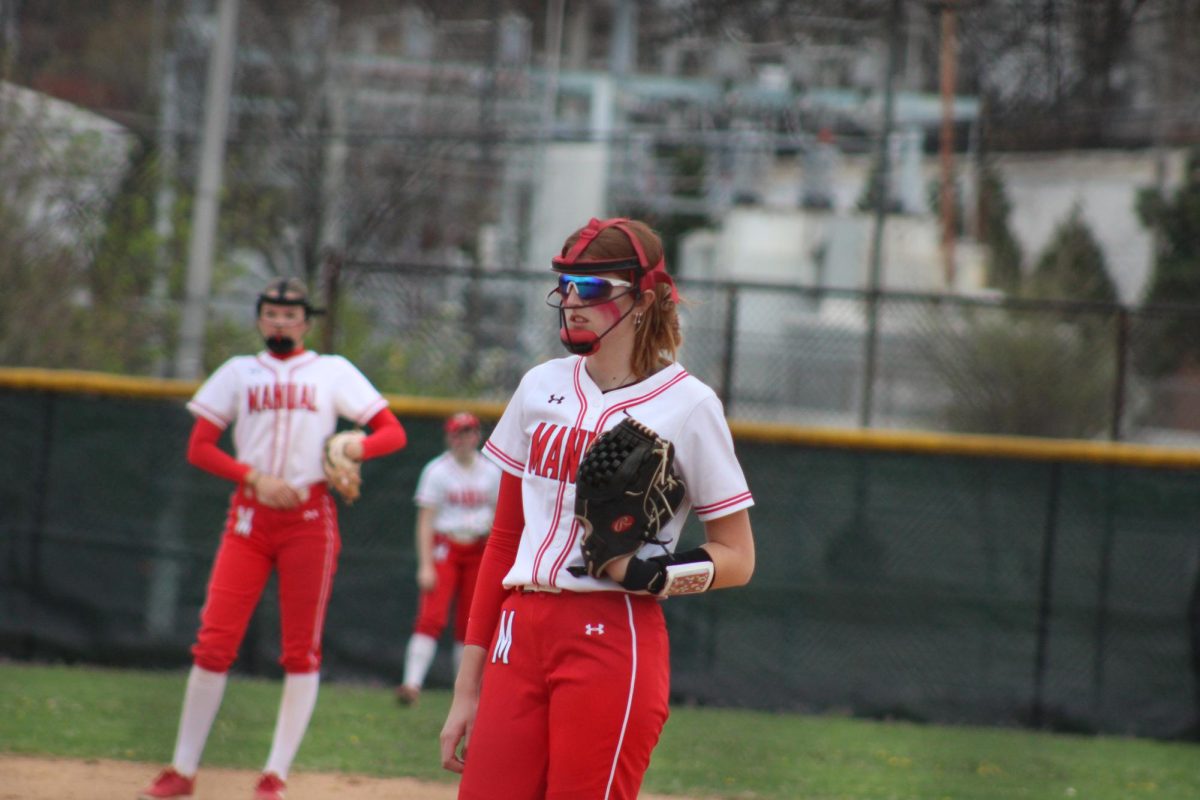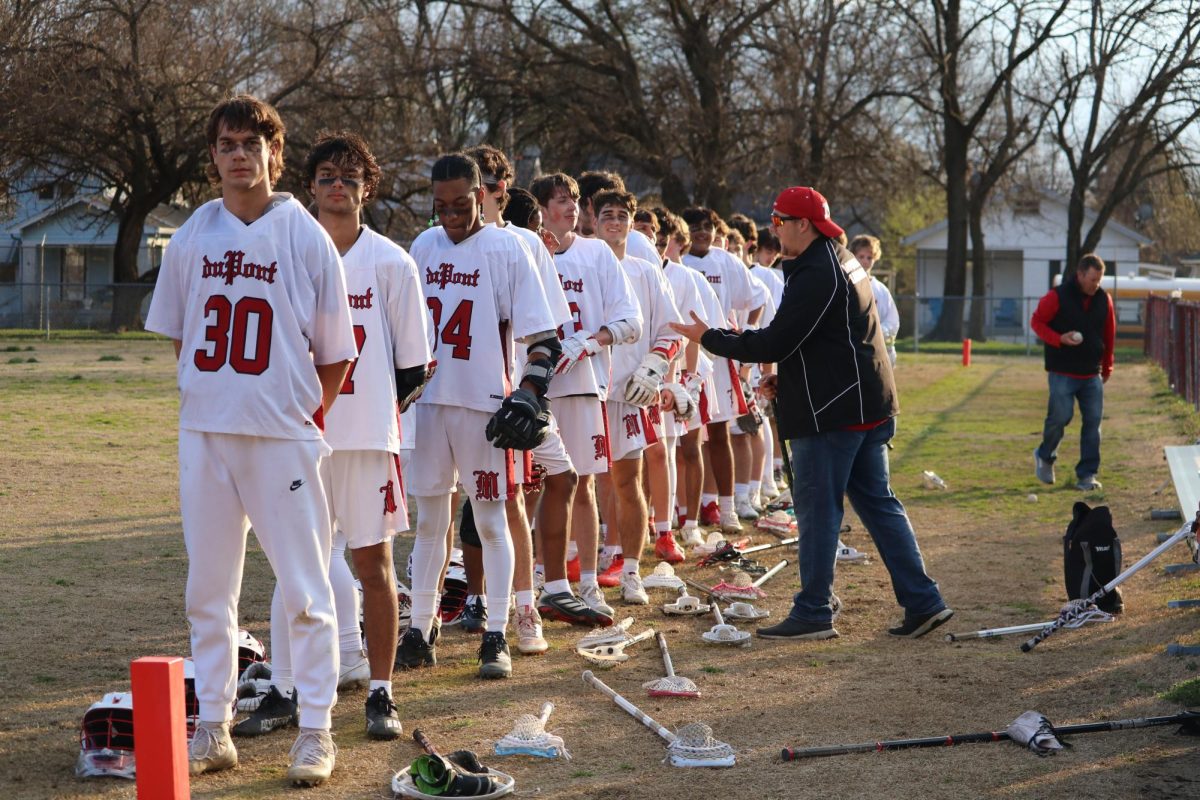Informational slideshows. Instagram posts. Revolutionaries spawned over 20-minute lunch breaks. Pickets. T-shirts. Microphone rigs bought with pooled and crumpled cash on the pretense that someone beyond the sign-clutching mass would stop and listen. People sit. They scroll. They think. The future is out of their hands, but those same hands may bear its blood. The future is out of their hands—until it isn’t.
And, with that thought, on-campus civic engagement is born. It is also with that thought that countless Manual students have decided to throw their hats in the same ring as so many before them. To some, participation in these communal expressions of defiant hope is a one-off social event. To others, it’s a mind-melting team project.
For William Shavkey (12, YPAS), president of Manual’s Young Democrats club, it’s a commitment.
Young Democrats (“Young Dems,” as its members call it) meets every Thursday in a naturally lit and vaguely lab-like classroom—325. Around 10 people show up routinely. They give slideshows highlighting important political topics and contextualizing current events.
Despite being heart-palpitatingly close to one of the most controversial and consequential elections in living memory, students joke with one another, sometimes about the mortal absurdity of society’s current situation, and sometimes about the silliest and most nothing-in-particular things anyone could think of.
The club’s small handful of officers lead the presentations, and Shavkey himself does much of the political analysis. He’ll sometimes lighten his slides with political cartoons; the group always seems to find time for humor—when discussions spring up, most of them are topically relevant, but others, to say the least, aren’t.
“My political epiphany came with COVID,” Shavkey said. “We’re all at home, we’re all watching the news a lot more—the conservative response to COVID was sort of uniquely disastrous.”
He talked about the pandemic ending—insofar as it ever did—at the start of his freshman year, and the experience he had joining the organization that he would later be at the helm of.
“We were excited, we were enthusiastic about seeing what we could do to ensure change for everyone,” he said, describing how the club’s environment of lighthearted bantering and firm progressivism revealed themselves to him over his time as a member.
“We’re so conscious of what the other side is doing that it allows us to maybe feel more extreme about how we want to make change because we realize the stakes,” he said, although he laughingly dismissed the notion that modern schools and liberal clubs are somehow radicalizing America’s youth.
He spoke about the importance of compromising and finding some middle ground, but struggled to see the virtue of the Obama-era slogan “when they go low, we go high,” a class-act mentality that backfired with the election of Donald Trump.
“The important thing is to win,” Shavkey said. He stressed the importance of starting change in firmly progressive areas to avoid losing general election battles to conservatives.
“We need to take the opportunity to build from wherever we have our strongholds,” he said.
The United States has several such citadels of liberalism, but Kentucky is, to say the least, not one of them. It has broken for the Republican candidate in every presidential election since 1996, a year when Bill Clinton won 70% of the electoral vote. Still, Shavkey insists that Democrats in Kentucky should vote in those races.
“It makes a statement,” he said. “I fought this same thing when I first got into politics. My whole idea was ‘there’s no reason to vote if you’re in Kentucky or Tennessee or Indiana, because ultimately it’ll never make a difference.’” He now rejects this thinking.
“It’s such a scapegoat answer to be like, ‘this change will never be brought forth because of my vote,’” he said. “We never really know how close we are to change until it’s right in front of our faces.”
It is for that very reason that Addison Lowry (11, J&C) has set out to empower young voices in a different way.
Lowry is a staffer for On the Record, a member of the Kentucky Student Voice team, and works on the 13 Firsts podcast. After she involved herself with Civics Unplugged—an organization empowering and funding young activists—and attended a civic innovation academy at Georgetown University, she realized the paradox that one voice breaking from the masses can lead to many voices shouting in unison for change.
Lowry made a series of Instagram posts for a—now closed—civic engagement challenge, encouraging students to submit essays about an issue in their community. It was sponsored by Retro Report, and gave a $500 prize to 10 winning writers.
“My big thing is to educate myself and others,” Lowry said. She told a story about a friend who struggled with mental health issues, and said that she wanted to help people who struggle in the same way she did.
“For a long time I wanted to be a psychologist, but recently I’ve been kind of more interested in getting into the legal field,” Lowry said. She said that she learned ways to help people outside her community at the Georgetown program, broadening her vocation while sharpening her passion for progress.
A need for action because of passive negligence that has degraded a community is one thing, but past Manual students have been compelled to act by a deluge of change that they would never have liked to see.
In May 2022, days after a leaked Supreme Court document spelled the end of Roe v. Wade that would come later in the summer, hundreds of Manual students walked out of class in protest.
“Raise your voice and raise hell,” said @dmhsforabortionrights, the Instagram account that organized the demonstration.
Local and state media covered it, just as they did a year later when Manual students walked out to protest anti-LGBTQ laws, especially SB 150, some of the most restrictive legislation against transgender youth in the country.
“(I) hope that this inspires other people to get out and use their voices to help make a change,” one commenter wrote in response to Manual RedEye’s article about the abortion-rights protest. Through the work of Shavkey, Lowry and others, one realizes that it did—and, as the young get older and movements roll and recede, one has long overdue hope that change is coming.








